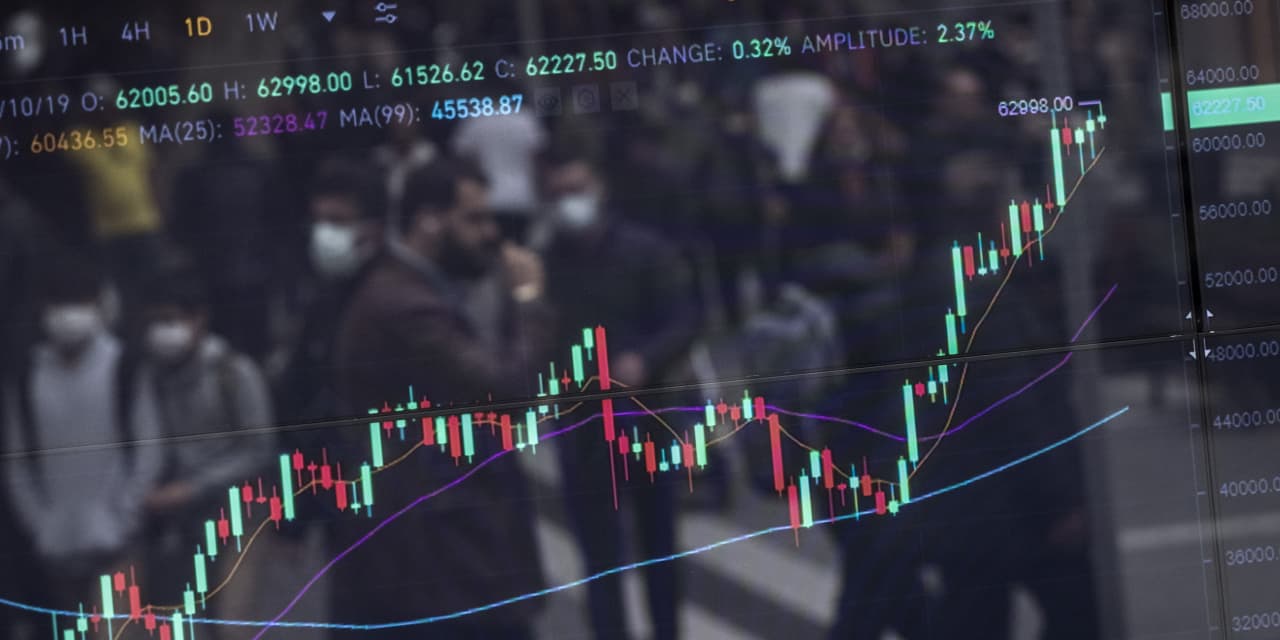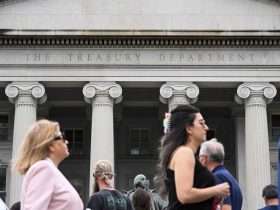Stocks are dithering and that may be good news for investors hoping to benefit from an options strategy known as covered calls.
“A sideways market, whether it’s trending upward or slightly downward, is a really terrific environment for covered call writing,” said Ray Di Bernardo, portfolio manager of the $76.7 million
Madison Covered Call ETF
(ticker: CVRD) launched in August.
While there are variations on the strategy, the basics are the same: The fund starts by building a portfolio of individual stocks or a basket of shares, such as the
S&P 500 inde
x, then sells call options against those stocks.
If the shares rise above a specified “strike” price, the fund pays the buyer the difference between the stock price and the strike price. If the stock tumbles or doesn’t rise enough to hit the exercise price, the fund keeps the income. In some instances, funds will use individual stock options, which can be “called away,” meaning that if the share price rises above the strike price, the stock will return to the buyer of the option.
The trade-off is that the fund gives away some of the potential upside from the stock market in return for steady income.
“Over a full market cycle you should get returns that are similar to the S&P 500 or whatever market you’re investing in, but you won’t get the high highs and you won’t get the low lows,” said Di Bernardo. “You’ll get to the same end result with much less volatility along the way.”
The main drawback is that they are left in the dust during big rallies. “The only time that this strategy really lags behind dramatically is when you have a straight up bull market,” he added. “You participate, but you’re certainly not going to be able to keep up in that environment.”
These strategies aren’t designed to beat the market, but may be a useful tool in a diversified portfolio, especially when the stock market is moving sideways.
“Even with higher interest rates, people are looking for differentiated income streams,” said Troy Cates, managing partner at NEOS Investments and a portfolio manager of the $355.7 million NEOS S&P 500 High Income ETF (ticker: SPYI). “Investors are looking for ways to stay invested in the equity markets and bring in real income.”
NEOS S&P 500 High Income ETF
launched just over a year ago and is up 9.53% this year. The fund’s performance is nearly keeping pace with the broader market:
SPDR S&P 500 ETF Trust
(SPY) is up 9.89%.
Its distribution yield—which includes the cash flow from option premiums—is 12.2%.
The fund tracks the S&P 500 while also selling call options tied to the index for additional yield. “We’ve captured most of that upside of the S&P 500 while still bringing in real income and paying that out to shareholders,” said Cates.
Todd Rosenbluth, head of research at VettaFi, a financial research and data company, said investors are increasingly looking toward more defensive equity strategies and using ETFs to gain that exposure.
The king of covered call strategies is the $28.4 billion
JPMorgan Equity Premium Income ETF
(JEPI). In 2022, the fund lost 3.5% on a total return basis—but handily outperformed the 18.1% plunge for the S&P 500. This year it is struggling with annualized total returns of 0.68%.
The fund’s strategy is building a “defensive” portfolio with managers actively picking individual stocks from the S&P 500 and then selling S&P 500 call options.
“What we’re solving for is lower volatility, higher quality companies—the blue chip companies that have really steady earnings and less volatility than the market,” said Matt Bensen, junior portfolio manager of the JPMorgan Equity Premium Income ETF. “We’re owning stocks and trading off some of the market’s potential upside for the bird in the hand of the income.”
Part of the reason the fund has underperformed this year is because it is underweight technology stocks. “When you have a very narrow rally and it’s very concentrated, our equity portfolio won’t keep up,” said Bensen.
But, he added, the fund has a 30-day SEC yield of 7.9%, which is in the middle of the fund’s goal of delivering an annual yield of 7%-9% over the long term. “There’s no free lunch,” added Bensen. “We don’t expect to capture all of the market’s return over a short period, but with this strategy you get a lot less volatility and a good stream of income.”
Write to Lauren Foster at lauren.foster@barrons.com
Read the full article here











Leave a Reply